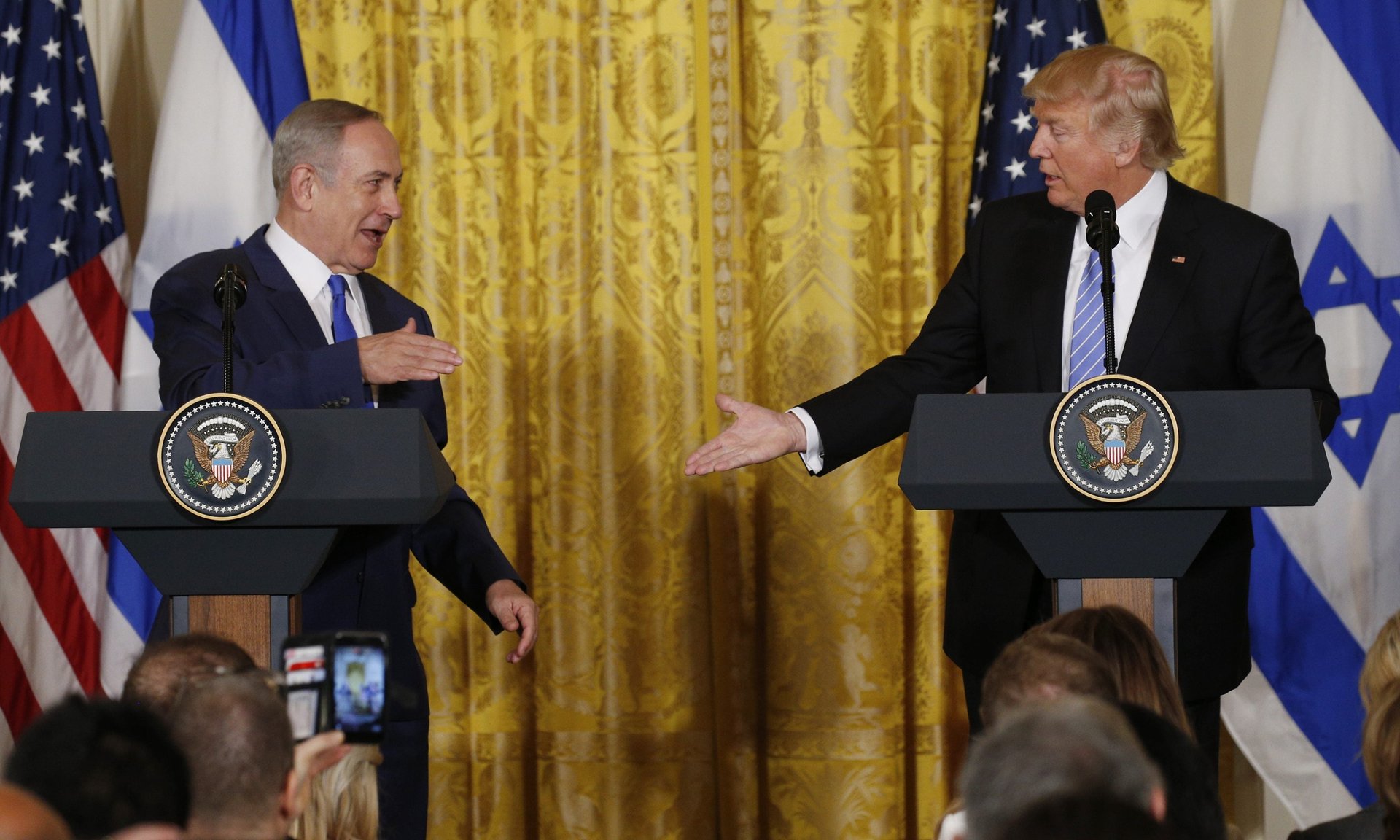Trump’s new stance on Palestine and Israel reverses two decades of US policy
When US president Donald Trump and Israeli prime minister Binyamin Netanyahu held a press conference on Feb. 15, they made news.


When US president Donald Trump and Israeli prime minister Binyamin Netanyahu held a press conference on Feb. 15, they made news.
First, Trump asked Netanyahu to “hold back” on building controversial settlements on territory that international law says belongs to the Palestinians “for a little bit.” That’s a reversal from his stance on the campaign trail, when he said Israel should “keep going“—and a direct rebuke to Netanyahu, under whom Israeli settlers on the West Bank have reached over 350,000, plus another 300,000 in areas of Jerusalem that Israel annexed in a move most of the world considers illegal.
Second, however, Trump signaled that he’s not standing behind the two-state solution to the conflict in Palestine and Israel, which envisions the territory carved up between the two populations and two independent governments.
“I’m looking at two-state and one-state and I like the one that both parties like,” he said, in response to a reporter’s question. “I could live with either one.”
“I thought for a while the two-state looked like it may be the easier of the two, but honestly, if Bibi and if the Palestinians, if Israel and the Palestinians are happy, I’m happy with the one they like the best,” he said.
In doing so, Trump upended two decades of US policy in the Middle East. The move was reminiscent of one he made in December, when he abruptly dropped the US’s decades-long support for Beijing’s “One China” policy, which treats Taiwan as a part of China rather than an independently governed nation.
While the two-state solution as a general concept dates back to 1937, the US first became heavily involved in the negotiations between Israel and the Palestinians in 1978, when president Jimmy Carter brokered the Camp David Accords. Those accords were for a peace treaty between Israel and Egypt but also laid out a vision of future self-rule—though not an independent state—for the Palestinians, who had been under Israeli governance since 1967.
Not until Bill Clinton, and the signing of the Oslo accords between Israel and the Palestinians in 1993, did the US begin to advocate full-fledged Palestinian independence. Since then it has maintained the policy that this is the only acceptable endpoint of talks.
But in recent years, as the process has faltered and Israeli settlements have encroached on more and more of the West Bank, more Palestinians and left-wing Israelis have started arguing that the two populations can no longer be disentangled. The only viable peace deal, on this view, involves merging them into a single state, comprising all of Israel, the West Bank, and Gaza, where everyone has equal civil rights. That’s anathema to most Israeli Jews, who, based on present demographic trends, would eventually become a minority in such a state.
There have been signs the US was giving up on two states too. Under Barack Obama, officials began dropping hints that the two-state solution was pretty much dead. Last year Elliott Abrams, a hawkish former adviser to president George W. Bush, said the same, and suggested US policy should be “to state our clear goal, a ‘comprehensive and lasting peace,’ without dictating one sole path to getting there.”
What such a peace might look like is anyone’s guess. Under a US government as supportive of Israel as Trump’s, it certainly won’t be a one-state solution with equal civil rights for all. But it’s highly unlikely the Palestinians would settle for merely another version of the current arrangement, in which they have some autonomy but no sovereignty.
Ironically, a few days ago Trump rejected Abrams for the job of deputy secretary of State. But his ideas may have made their way into the administration nonetheless. Whether Trump will hold to them is unclear—he did, after all, back down on ”One China” a few weeks later. But China is the world’s second most powerful nation. The Palestinians don’t have that leverage.